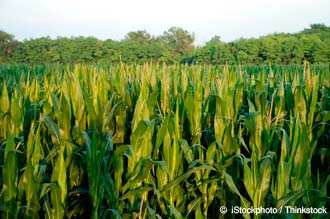by Jeff Cobb
25 Free Online Resources and Web Apps for Lifelong Learners
The Internet has made the lifelong pursuit of knowledge easier for nearly everyone in the world. There are tons of websites dedicated to providing free courses, reference books, education apps, and other learning materials. Here are 25 stand-out sites that would be useful to almost any lifelong learner.
Clusty – This unique search engine sorts results into clusters of related information so that it is easier to sort out the relevant from the irrelevant.
Schoolr – Schoolr is a fully-customizable search engine that can be used to search Google, Wikipedia, and other popular sites. It can also be used to translate text, convert units, and cite sources.
MyStickies – This site offers an alternative to bookmarking. Instead of saving URLs and page titles, MyStickies allows you to place digital sticky notes with annotations around the web so that you can retrieve previously viewed pages and understand immediately why they are important.
Diigo is a handy research tool that can be used to highlight and annotate pages on the web. Anything that is marked with Diigo can be accessed later on from any PC.
Hooey – Hooey is a unique tool for people who like to surf the web. It records browser history, measures productivity, and offers tips to help you better understand your browsing habits.
Internet Public Library – The IPL is a free public library for the Internet community. Resources include books, magazines, reference materials, subject collections, a physical library locator, and an “Ask the Librarian” section.
[ad]
RefDesk – This award-winning, family-friendly website is a great place to find reference materials online. RefDesk also offers one of the best fact checkers on the Internet.
SparkNotes – SparkNotes is an incredibly useful resource. In addition to an enormous literature section, the site also offers study guides and discussion forums for a wide range of academic subjects.
Schmoop – This free beta site makes it fun to study literature, poetry, and U.S. history. Schmoop features include easy-to-read study guides, homework helpers, and other educational materials.
History.com – The official History Channel website is one of the best places on the web to learn about a broad range of history topics. You can read articles, watch videos, and explore many other resources.
Wolfram MathWorld – This extensive math resource contains contributions from all over the world. Entries include information about algebra, geometry, calculus, applied mathematics, discrete mathematics, number theory, statistics, and other math topics.
OpenCourseWare (OCW) Consortium – The OCW Consortium is a collaboration of more than 200 higher education institutions. The Consortium’s website is an excellent place to find free courses and course materials from some of the world’s best colleges and universities.
Lecturefox – Lecturefox is an online directory of free audio, video, and text-based lectures from universities like MIT and Yale.
LearnOutLoud – This Internet catalog contains more than 20,000 free educational materials, including books, videos, audio lectures, and podcasts.
The Online Books Page – The University of Pennsylvania’s Online Books Page is one of the best places to find free unabridged books online. The site lists more than 35,000 books that can be downloaded or viewed at no cost.
The Free Library – Farlex’s Free Library contains more than five million books and articles that can be viewed online for free. The site also allows you to create your own home page with your favorite bookmarks and RSS feeds.
BookMooch – This book swapping site makes it easy to get rid of the books you don’t need and get books you want in exchange. Membership is free and books can be exchanged worldwide.
wePapers – This site is geared toward college students, but it is also an excellent resource for lifelong learners. At wePapers, you can find academic papers, study groups, and a venue to share your knowledge.
Livemocha – Livemocha is an international community of foreign language learners. You can use it to study almost any world language at your own pace.
VerbaLearn – VerbaLearn is a good place to practice English vocabulary. You can review words, make flashcards, and customize the way you learn.
Class Marker – At ClassMarker, you can create online quizzes that test your knowledge on any subject. No software or download required.
Mikogo – This free screen sharing tool makes it easy to share your computer screen with other people who are online. Mikogo works well for online meetings, presentations, and collaborative learning.
Bloglines – This web-based tool makes your home page look like a newspaper. It allows you to assemble all of your favorite sites and blogs amidst information like local weather, sports, and other items of your choosing.
ThinkFree – ThinkFree offers Internet-based file sharing and storage as well as a Microsoft Office compatible application suite that allows you to access documents without opening the necessary application.
This is a guest post from Karen Schweitzer, the About.com Guide to Business School. Karen also writes about online colleges for OnlineCollege.org.
P.S. If you enjoy what you read here on Mission to Learn, I encourage you to subscribe to the RSS feed or use the e-mail subscription form at the top right side of this page.
[ad]
ShareThis
Related posts:
 The Indiana Business Journal reports that proteins from genetically modified crops are showing up in Indiana waterways.
The Indiana Business Journal reports that proteins from genetically modified crops are showing up in Indiana waterways. 


GM Insecticide Poisons Widespread in Waterways
The Research on Bt Toxin is Very Clear …
A Pesticide Factory in Your Gut?
October is Non-GMO Month!
How You Can Help Others to Avoid GMO Foods
Who Will You Share this Information With?
Must-See Movies to Share!
Your Action Plan
Together, We Control the Future of Our Food